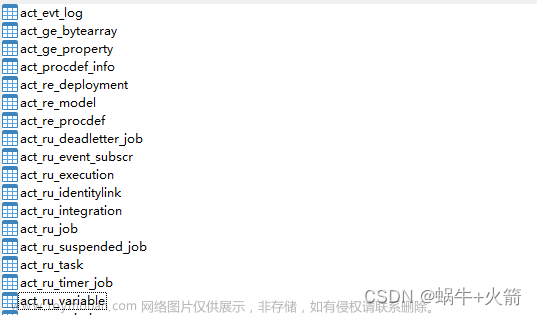在 main 启动函数中调用
这个是在所有启动后执行,也是常用之一。
@SpringBootApplication
public class ListenerApplication {
public static void main(String[] args) {
SpringApplication.run(ListenerApplication.class, args);
System.out.println("启动成功");
}
}实现 CommandLineRunner 接口
项目初始化完毕后才会调用方法,提供服务。好处是方法执行时,项目已经初始化完毕,是可以正常提供服务的。
@Component
public class CommandLineRunnerImpl implements CommandLineRunner {
@Override
public void run(String... args) throws Exception {
System.out.println(Arrays.toString(args));
}
}实现 ApplicationRunner 接口
实现 ApplicationRunner 接口和实现 CommandLineRunner 接口基本是一样的。不同的是启动时传参的格式,CommandLineRunner 对于参数格式没有任何限制。
ApplicationRunner 接口参数格式必须是:key=value
@Component
public class ApplicationRunnerImpl implements ApplicationRunner {
@Override
public void run(ApplicationArguments args) throws Exception {
Set<String> optionNames = args.getOptionNames();
for (String optionName : optionNames) {
List<String> values = args.getOptionValues(optionName);
System.out.println(values.toString());
}
}
}注意
CommandLineRunner 和 ApplicationRunner 默认是 ApplicationRunner 先执行,如果双方指定了@Order 则按照 @Order 的大小顺序执行,大的先执行。
实现 ApplicationListener 接口
实现 ApplicationListener 接口和实现 ApplicationRunner、CommandLineRunner 接口基本差不多,项目初始化完毕后才会调用方法,提供服务。
@Component
public class ApplicationListenerImpl implements ApplicationListener<ApplicationStartedEvent> {
@Override
public void onApplicationEvent(ApplicationStartedEvent event) {
System.out.println("ApplicationStartedEvent");
}
}当以 @Component 方式配置时,事件触发顺序如下:
ApplicationListener<ServletWebServerInitializedEvent>
ApplicationListener<ContextRefreshedEvent>
ApplicationListener<ApplicationStartedEvent>
ApplicationListener<ApplicationReadyEvent>
ApplicationListener<ContextClosedEvent>当通过 /META-INF/spring.factories 配置时,事件触发顺序如下:
org.springframework.context.ApplicationListener=com.xh.event.ApplicationListenerImpl
ApplicationListener<ApplicationStartingEvent>
ApplicationListener<ApplicationEnvironmentPreparedEvent>
ApplicationListener<ApplicationContextInitializedEvent>
ApplicationListener<ApplicationPreparedEvent>
ApplicationListener<ServletWebServerInitializedEvent>
ApplicationListener<ContextRefreshedEvent>
ApplicationListener<ApplicationStartedEvent>
ApplicationListener<ApplicationReadyEvent>
ApplicationListener<ContextClosedEvent>注意
- 如果监听的是 ServletWebServerInitializedEvent、ContextRefreshedEvent、ApplicationStartedEvent 事件,则 ApplicationListener 会在 CommandLineRunner 和 ApplicationRunner 之前执行
- 如果监听的是 ApplicationReadyEvent 事件,则 ApplicationListener 会在 CommandLineRunner 和 ApplicationRunner 之后执行
- ContextClosedEvent 当调用关闭方法的时候,才会触发了 ContextClosedEvent 事件
实现 InitializingBean 接口
项目启动时,调用此方法,在 ServletWebServerInitializedEvent 事件前触发。文章来源:https://www.toymoban.com/news/detail-684390.html
@Component
public class InitializingExample implements InitializingBean {
@Override
public void afterPropertiesSet() throws Exception {
System.out.println("InitializingExample");
}
}@PostConstruct 注解
使用注解 @PostConstruct 实现,不推荐使用。如果执行的方法耗时过长,会导致服务无法提供服务。文章来源地址https://www.toymoban.com/news/detail-684390.html
@Component
public class StartBoot {
@PostConstruct
public void init() throws InterruptedException {
System.out.println("@PostConstruct");
}
}到了这里,关于详谈SpringBoot启动项目后执行自定义方法的方式的文章就介绍完了。如果您还想了解更多内容,请在右上角搜索TOY模板网以前的文章或继续浏览下面的相关文章,希望大家以后多多支持TOY模板网!











